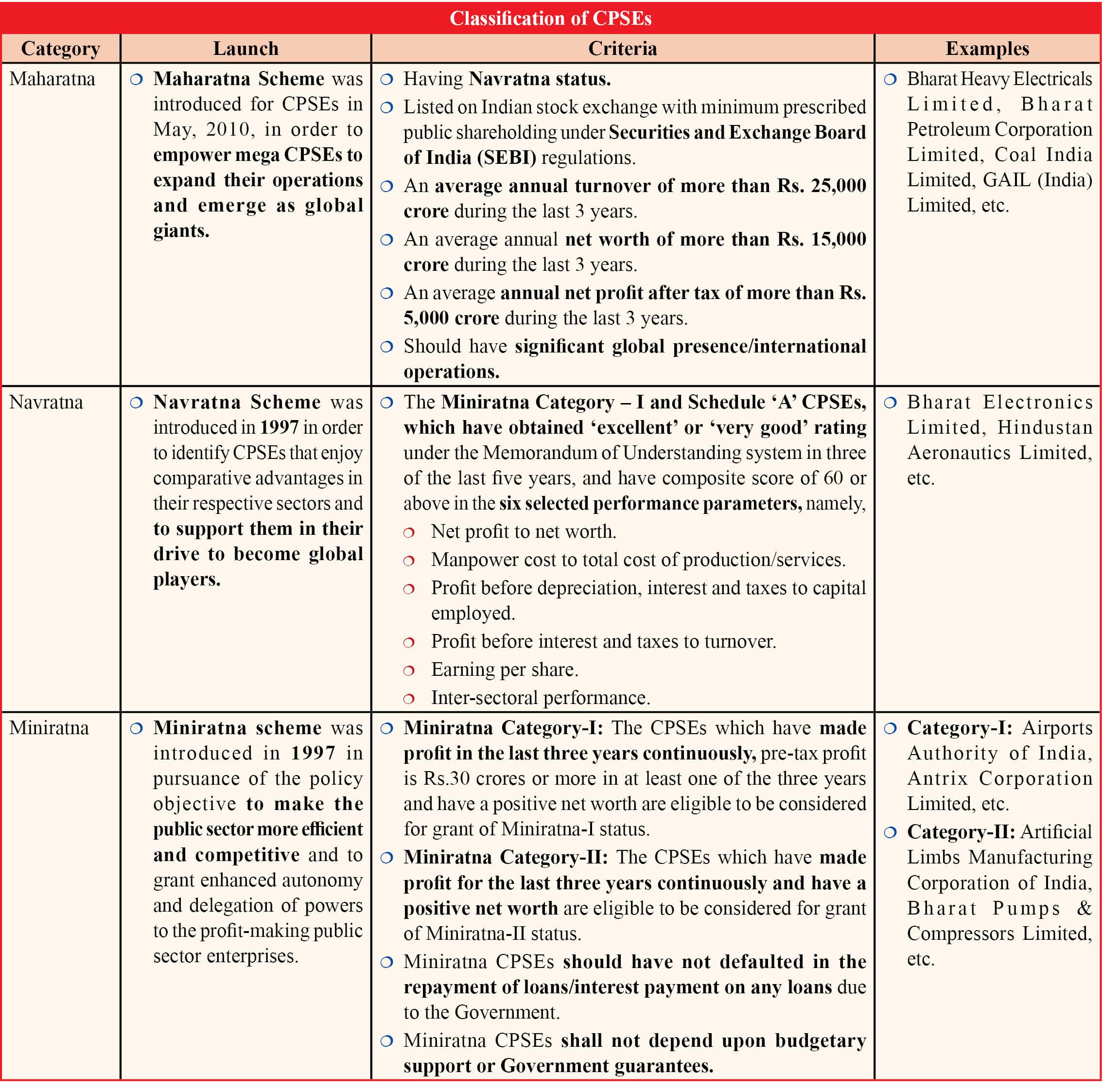Governance
Department of Public Enterprises
- 09 Jul 2021
- 4 min read
Why in News
Recently, the government reallocated the Department of Public Enterprises (DPE) to the finance ministry from the ministry of heavy industries.
- The Finance Ministry will now have six departments while DPE's parent ministry, the Ministry of Heavy Industries and Public Enterprises will now be called the Ministry of Heavy Industries.
Key Points
- About:
- It is the nodal department for all the Central Public Sector Enterprises (CPSEs) and formulates policy pertaining to CPSEs.
- CPSEs are those companies in which the direct holding of the Central Government or other CPSEs is 51% or more.
- It lays down, in particular, policy guidelines on performance improvement and evaluation, autonomy and financial delegation and personnel management in CPSEs.
- It furthermore collects and maintains information in the form of a Public Enterprises Survey on several areas in respect of CPSEs.
- It will now be the sixth department in the finance ministry besides economic affairs, revenue, expenditure, financial services and Department of Investment and Public Asset Management (DIPAM).
- The shift of DPE to the Finance Ministry will help in efficient monitoring of the capital expenditure, asset monetisation and financial health of the CPSEs.
- It is the nodal department for all the Central Public Sector Enterprises (CPSEs) and formulates policy pertaining to CPSEs.
- Background:
- In their report, the Estimates Committee of 3rd Lok Sabha (1962-67) stressed the need for setting up a centralized coordinating unit, which could also make continuous appraisal of the performance of public enterprises.
- Which led to the setting up of the Bureau of Public Enterprises (BPE) in 1965 in the Ministry of Finance.
- In 1985, BPE was made part of the Ministry of Industry. In May, 1990, BPE was made a full-fledged Department known as the Department of Public Enterprises (DPE).
- Major Functions:
- Coordination of matters of general policy affecting all Public Sector Enterprises (PSEs).
- Restructuring or closure of PSEs including the mechanisms.
- Rendering advice relating to revival.
- Counselling, training and rehabilitation of employees in CPSEs under Voluntary Retirement Scheme.
- Categorisation of CPSEs including conferring 'Ratna' status, among others.
- CPSEs are classified into 3 categories- Maharatna, Navratna and Miniratna. Presently, there are 10 Maharatna, 14 Navratna and 74 Miniratna CPSEs.
Estimates Committee
- About:
- It was first established during British Era in the 1920s but Independent India’s first Estimates Committee was established in 1950.
- This committee examines the estimates included in the budget and suggests ‘economies’ in public expenditure.
- Other Financial Committees of Parliament include - Public Accounts Committee and Committee on Public Undertakings.
- Members:
- It has 30 members and all these members are from Lok Sabha.
- The members are elected by Lok Sabha members from amongst themselves every year by principles of proportional representation by means of a single transferable vote, so that all parties get due presentation in it.
- A minister cannot be elected as member/Chairman of estimates committee.
- The chairman is appointed by the Speaker and the chairman is always from the ruling party or coalition.
- Functions:
- This committee tries to report the economy and efficiency in expenditures.
- It suggests what changes in policy or administrative framework can be done and what alternative policies can be considered to bring economy and efficiency.
- The works of this committee continue throughout the year and it keeps reporting to the house as examination proceeds.
- Due to this reason, this committee is also called ‘continuous economy committee’.







